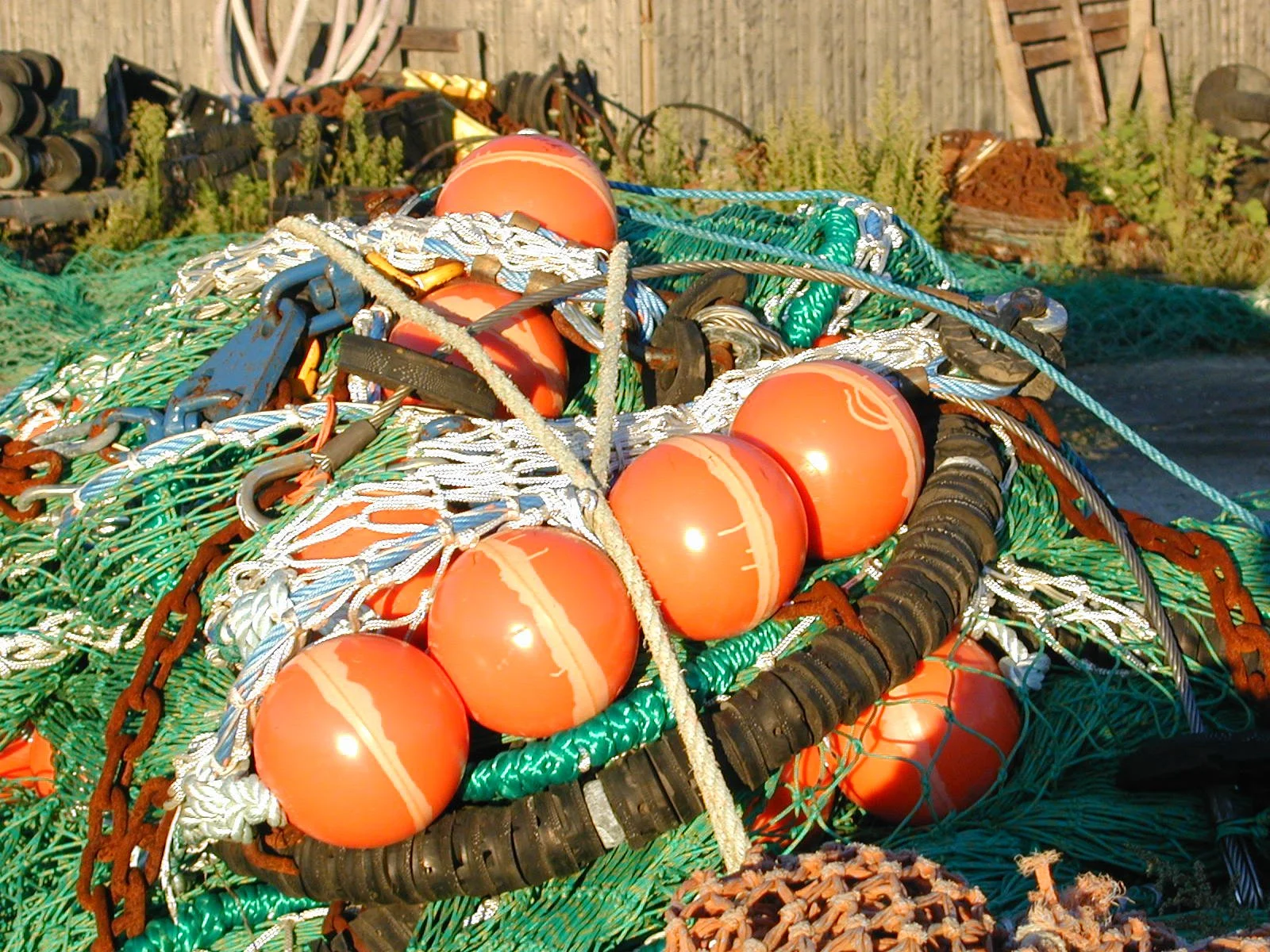Fish Habitat
Top of page: A deep-sea red crab perched on bubblegum coral in Norfolk Canyon. Above: Juvenile pollock surround a red tree coral in Glacier Bay National Park in the Gulf of Alaska. Photo credit (both photos): NOAA Ocean Exploration.
Fish habitat plays an essential role in the reproduction, growth, and sustainability of commercial and recreational fisheries and is essential to the biodiversity of marine and coastal ecosystems. Marine fish depend on healthy habitats for survival, and many species require specific types of habitats for spawning, breeding, feeding, and growth.
The Magnuson-Stevens Fishery Conservation and Management Act requires the Regional Fishery Management Councils and NOAA Fisheries to designate Essential Fish Habitat (EFH) for species managed under federal fishery management plans. Designation of EFH is important because it means those areas will be given additional consideration before any federal agencies are allowed to carry out activities in those areas. The Councils are also involved in the designation of Habitat Areas of Particular Concerns (HAPCs), which are subsets of EFH that are particularly susceptible to human-induced degradation, especially ecologically important, or located in an environmentally stressed area.
Fishing Gear Effects on Marine Habitats: A National Database
The Fishing Gear Effects on Marine Habitats Database is a searchable collection of literature on the impacts of fishing gear on marine fish habitats throughout the United States and U.S. Territories. The database is designed to assist fishery managers, researchers, and stakeholders in evaluating and managing the adverse effects of fishing gears on marine and estuarine habitats. Learn more about the project here.
CCC Habitat Work Group
In 2014, the Council Coordination Committee (CCC) established a Habitat Work Group to provide a forum for Council and NOAA Fisheries staff to discuss habitat science needs and implementation strategies, to share regional updates and perspectives, and to address concerns benefiting from broad group experience. The group includes habitat specialists from all eight Councils as well as NOAA Fisheries regional offices and headquarters.
Habitat Workshops and Reports
CCC Habitat Work Group, January 2024
Habitat Climate Resilience Innovations Workshop: In January 2024, the CCC’s Habitat Work Group convened a two day workshop that explored best practices with respect to incorporating climate considerations into fish habitat work. Participants included council staff and NOAA Fisheries staff who are responsible for EFH-related issues, including permit review and consultation.
Workshop Materials and Presentations:
Climate Change Case Study: Machias Dike Bridge Project - Johnson
The Climate, Ecosystems, and Fisheries Initiative: Overview Handout - Roskar
GARFO Guidance for Integrating Climate Change into Consultations - Johnson
Mind the Gaps - Partnerships and West Coast Groundfish - Whitmire
Northeast Region Habitat Climate Vulnerability Assessment - Johnson
EFH Consultation and Regional Innovations Workshop: In August 2019, the CCC’s Habitat Work Group convened a three-day workshop that focused on best practices for EFH consultations on non-fishing activities. Participants shared current practices and challenges across regions and brainstormed ways to improve collaboration with one another and outside partners in the future. Workshop discussions and outcomes are summarized in the EFH Consultation and Regional Innovations Workshop Report.
National EFH Summit: In recognition of the twentieth anniversary of the inclusion of EFH provisions into the Magnuson-Stevens Fishery Conservation and Management Act (MSA), NOAA Fisheries, the regional fishery management councils, and their partners convened the National EFH Summit in May 2016. The goal of the summit was to assess and identify opportunities, challenges, and successful approaches for the effective implementation of the MSA-EFH authorities. The findings and outcomes are reflected in the National Essential Fish Habitat Summit Report.
Report: Regional Use of Habitat Areas of Particular Concern: In 2016, CCC Habitat Work Group members developed a joint report on Regional Use of the Habitat Area of Particular Concern (HAPC) Designation. The report synthesizes regional experiences of implementing the HAPC provision, communicates habitat research and conservation priorities, and links habitat protection with fishery management objectives and ecosystem resilience.



